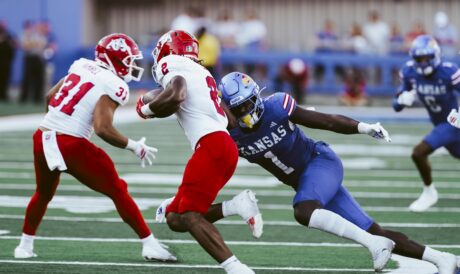It’s early in the year for a bye week, but it feels like the Kansas football team has already had the chance to learn a lot about itself.
The Jayhawks saw what they could look like on both sides of the ball when functioning at near-peak capacity in early-season home matchups with Fresno State and Wagner, then got a chance to experience some considerable adversity as they entered a hostile environment at Missouri and ultimately took a close loss to the rival Tigers, 42-31 on Saturday.
It’s a small sample of three games ahead of the start of league play on Sept. 20, but it provides ample opportunity for analysis, as what was essentially a brand-new team becomes far more familiar with each passing week.
Here’s a look at a few key positive and negative indicators from the first three games of the season.
Kansas tight end Boden Groen runs the ball during the second half of an NCAA college football game against Fresno State, Saturday, Aug. 23, 2025, in Lawrence.
Promising: Tight ends are open again
One of the most frequent (and most abstract) gripes I heard from Jayhawk fans during the KU offense’s lone year under Jeff Grimes was that KU never seemed to have its tight ends wide open anymore, like they always seemed to be when Andy Kotelnicki was the offensive coordinator.
To some extent that’s an exaggeration, and to some extent it’s a credit to the quality of player the Jayhawks had a couple years back in Mason Fairchild, but it’s undeniable that KU’s coaches reliably found holes in the defense for him to sit in. Fairchild caught 27 passes for 451 yards and three touchdowns in 2023, and the following year the Jayhawks needed four players to combine for 31 catches, 391 yards and two touchdowns.
KU’s deployment of its tight ends looks a lot better this year in the early going. It’s not just that DeShawn Hanika’s performance against Missouri was the best of his career in every conceivable way — six catches, 74 yards, two touchdowns — but that quarterback Jalon Daniels frequently looked his way in different portions of the field, on different routes and so on, and that Hanika caught all six targets.
Boden Groen, a summer transfer from Rice, might be KU’s most consistently uncovered player to this point, albeit in just 62 snaps this year; he broke open for a 24-yard grab on fourth down at Mizzou and had a pair of big catches in empty space the previous week against Wagner. And redshirt freshman Carson Bruhn has outsnapped them both, although he’s been more frequently deployed as a blocker.
Kansas head coach Lance Leipold looks on during the first half of an NCAA college football game against Fresno State, Saturday, Aug. 23, 2025, in Lawrence.
Concerning: End-of-half situations remain a topic of discussion
There was a point midway through the 2024 season at which KU had been outscored 45-0 in the final two minutes of the first half in matchups against FBS opponents. The Jayhawks weren’t much better at the ends of games and gave up quite a few game-winning and game-sealing drives last year, most notably on the road against opponents like West Virginia and Arizona State.
Those challenges precipitated KU’s offseason emphasis on finishing. In the winter, KU played the final two minutes of its loss to Kansas State repeatedly on its video board and challenged its players to accomplish complicated tasks, often in the exact amounts of time it had remaining when it had failed to complete a two-minute drill during the 2024 season.
With all that offseason work in the rearview mirror, it was an inauspicious sign that in its first game against power-conference competition, KU relinquished a lead in the fourth quarter (and then couldn’t respond when Missouri went ahead 35-31). Postgame discourse predictably revolved heavily around head coach Lance Leipold’s pre-halftime and late-game decision-making. That is inevitably the sort of second-guessing that happens when teams lose close games, particularly against rivals, but there were undeniably some areas in which KU’s staff and players could have acquitted themselves better.
The most salient situation occurred prior to halftime. When the Jayhawks got the ball back with a minute left in the first half and three timeouts, they went conservative after Emmanuel Henderson Jr. only got one yard on a first-down reception, and Missouri called its first of two timeouts. At that point, with 49 seconds left KU adapted its approach, apparently opting to run out the clock with Daniel Hishaw Jr.
The problem was that KU did not adapt a second time after Hishaw went out of bounds, meaning the Tigers were in position to get the ball back with a stop on third-and-7. It no longer made sense for KU to treat the down cautiously, given that Missouri’s remaining timeout ensured it could force a punt if KU came up short. But the Jayhawks remained conservative, ran for four yards, punted the ball back and eventually gave up a game-tying field goal before the half.
It was an early sign that these same sorts of issues could persist in 2025.
Kansas defensive tackle Tommy Dunn Jr. (92) comes in for a tackle on Wagner quarterback Jack Stevens (7) during the second quarter on Friday, Aug. 29, 2025 at David Booth Kansas Memorial Stadium. Photo by Nick Krug
Promising: D.K. McDonald is using defensive linemen well
It’s not surprising that a coach who worked for many years in a 3-3-5 scheme at Iowa State would want to deploy some non-four-man fronts. The way that new defensive coordinator D.K. McDonald has done so, however, has thus far maximized the personnel he has at his disposal.
Putting three defensive tackles on the field when defensive tackle is arguably KU’s best position group is a no-brainer, and it’s a departure from what the Jayhawks had done in years past under Brian Borland. It gives opposing offenses something new to think about given that the Jayhawks have also proven quite capable of playing entire games in their base 4-2-5, as they essentially did against Wagner.
The results have been quite promising thus far. Tommy Dunn Jr., D.J. Withers and Blake Herold have all played roughly equal numbers of snaps. Withers has been a steady presence all year, Dunn was disruptive with four pressures against Missouri, and Herold forced a key fumble and was the Jayhawks’ highest-graded defender on Pro Football Focus on Saturday — all in a game where KU was outmatched in some sense from a physicality standpoint, as Leipold himself implied afterwards (if he didn’t say it outright). Kenean Caldwell is playing the best football of his six-year career and recorded his first-ever full sack against the Tigers.
Behind them, Marcus Calvin hasn’t looked out of place at all after his offseason growth, and Gage Keys hasn’t even played yet this year as a result of an injury during fall camp.
Along with these three-defensive-tackle looks, McDonald has at times also put his pass-rush defensive ends, like Dean Miller and Leroy Harris III, so far wide that it almost looks like they’re playing slot corner. That’s a good way of giving them high-speed starts to make full use of their length and athleticism. Miller hasn’t quite made the leap yet from his strong 2024 — his pass-rush win rate is 3.8% through two games of action after he missed the opener — and Justice Finkley has had a quiet start to the season opposite him, but McDonald is putting his players in positions to succeed.
Kansas running back Daniel Hishaw Jr. (9) looks for room to break through during the third quarter against Fresno State on Saturday, Aug. 23, 2025 at David Booth Kansas Memorial Stadium. Photo by Nick Krug
Concerning: Replacing Devin Neal might be a little more challenging than expected
As many questions as Leipold might have faced from regional and national media members in the offseason about the health and growth of Daniels — always a hot topic during the summers he’s been in Lawrence — he surely received nearly as many about replacing Devin Neal, the program’s all-time leading rusher who graduated last season.
Luckily for Leipold, and for KU, the Jayhawks had good answers. They retained Neal’s longtime running mate Daniel Hishaw Jr., who coaches repeatedly said over the course of the offseason was in the best mental and physical shape of his life, and added Leshon Williams, a veteran Iowa transfer.
The two were satisfactory if unspectacular across KU’s first two victories — Williams impressed against Fresno State but missed the Wagner game due to a minor injury — and then the Kansas and Missouri run games formed quite a contrast on Saturday.
On 25 carries, Missouri running back Ahmad Hardy ran for 103 of his 112 yards after contact, forcing 12 missed tackles along the way, according to PFF. (He was one of two 100-yard rushers for the Tigers.) Meanwhile, KU’s Hishaw and Williams combined for 11 yards on nine carries and made one player miss between them. More than 11 of their yards were after contact, meaning they were frequently getting met in the backfield, and so KU’s offensive line shares a lot of the responsibility for the poor rushing performance (and in fact KU’s run-blocking grade as a team was 43.1).
But the Jayhawks clearly missed Neal’s vision and his ability to make something out of nothing. In his 50 career games, Neal forced 166 missed tackles, or 3.3 per game. Hishaw and Williams aren’t that same type of player, and in fact they are both a very similar sort of bruising runner so there isn’t necessarily a contrast between them for defenders to adapt to.
The good news for KU is that it may have just played the stingiest run defense it’ll face all year. That’s still to be determined, of course, at this early stage of the season.
Kansas linebacker Bangally Kamara (1) stops Fresno State running back Rayshon Luke (2) on a run during the second quarter on Saturday, Aug. 23, 2025 at David Booth Kansas Memorial Stadium. Photo by Nick Krug
Promising: Linebackers are exceeding expectations
Middle linebacker Trey Lathan came to KU as a wily veteran with Big 12 experience, but his actual on-field production has vastly outstripped preseason expectations. He is KU’s leader by far with 25 tackles through three games, and 11 of those are solo stops. His early productivity is a big reason why the Jayhawks have looked much stronger at this position than in recent years, and it’s been particularly critical given the injuries that beset the group in the opening weeks. Joseph Sipp Jr., his fellow offseason transfer who was expected to serve as a key contributor at middle linebacker, still hasn’t played.
Of course, KU looks a lot healthier at linebacker than it did last week, in part because veteran Jayson Gilliom returned to action but more notably because Bangally Kamara’s dire-sounding non-contact injury to his left leg ended up keeping him out for just one week. Just 10 days removed from that injury — which Leipold recently said KU initially thought could make him miss the rest of the season — Kamara flew around the field in the Jayhawks’ loss to Missouri and displayed the athleticism that makes him one of KU’s top defensive contributors, particularly when healthy.
The bye week will do this group good, and younger players like Jon Jon Kamara and Logan Brantley still haven’t had the chance to show much of note against high-level competition. But this position already looks like a great complement to the thriving defensive line.
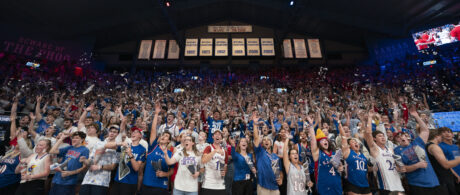
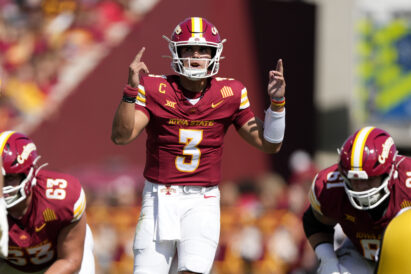

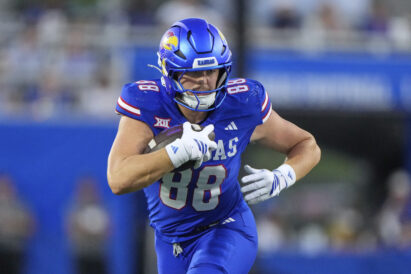 AP Photo/Charlie Riedel
AP Photo/Charlie Riedel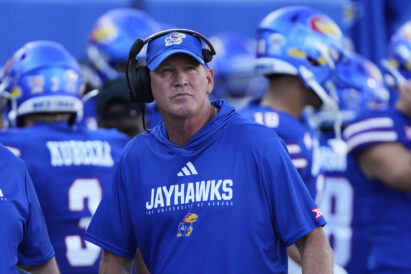 AP Photo/Charlie Riedel
AP Photo/Charlie Riedel

